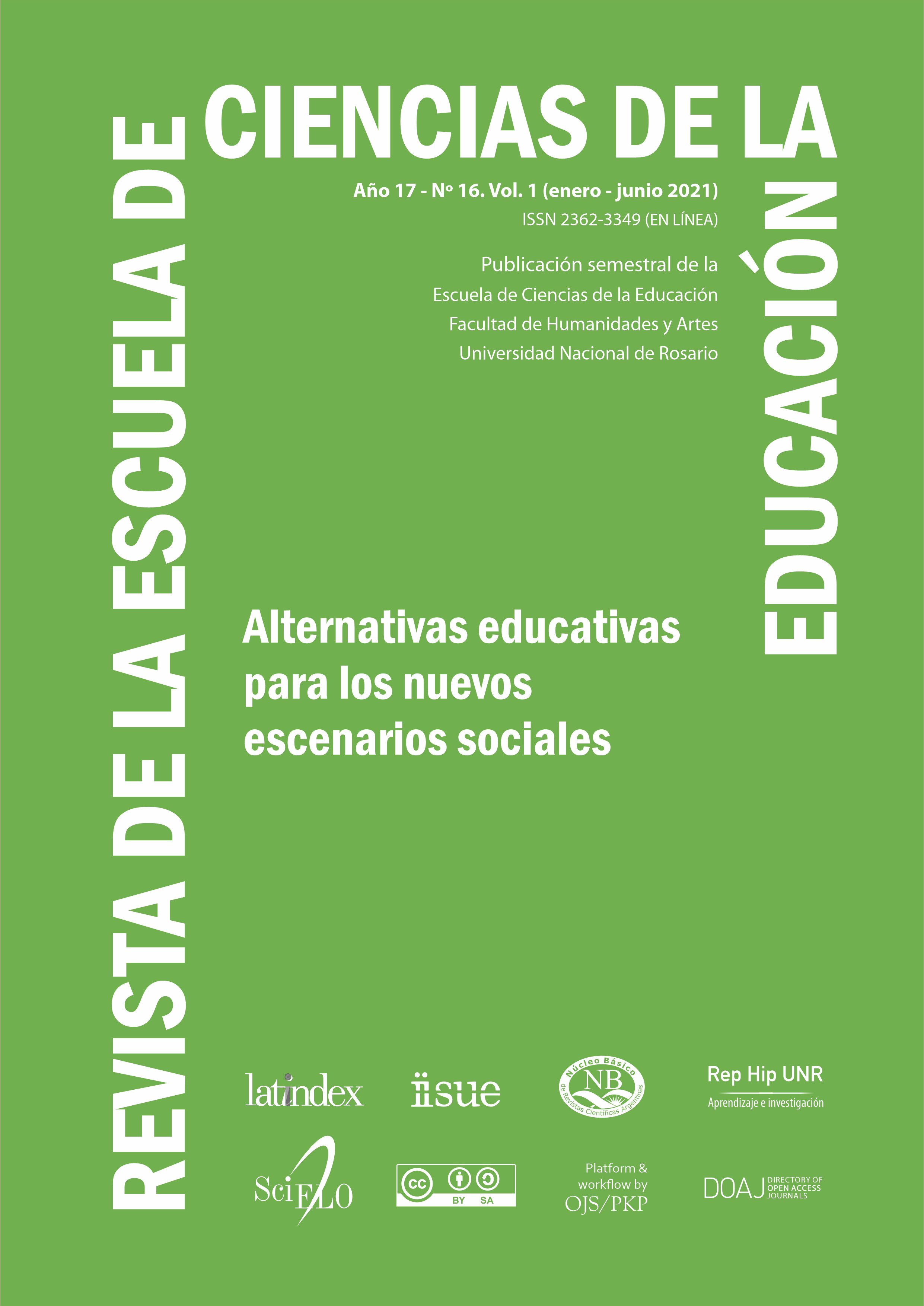Meaningful learning experiences through dramatic play
DOI:
https://doi.org/10.35305/rece.v1i16.589Keywords:
Dramatic Play, Social-emotional development, Cognitive processes, LearningAbstract
Dramatic game focuses on different modes of so-called multisensory learning, through processes such as creating, exploring, playing and learning, improving divergent thinking, fluency of ideas and flexibility. In this work, several lines of research are reviewed that detect and develop the impact of performing arts in some of these processes. It is observed how significant learning experiences are produced that promote greater subjective well-being, increase aesthetic awareness, promote social participation and civic engagement.
Downloads
References
Bamford, A. (2014). “Artes y emociones que potencian la creatividad”. Informe Fundación Botín 2014. Santander: Fundación Botín.
Brook, P. (2002). La puerta abierta: Reflexiones sobre la interpretación y el teatro. Barcelona: Alba editorial.
Catterall, J. (2002). Research on drama and theater in education. En R. Deasy (Ed.) Critical links: learning in the arts and student academic and social development. Arts Education Partnership.
Cruciani, F. (1995). Sulla scienza di Stanislavskij, en Registi pedagoghi e comunità teatrali nel Novecento. Roma: Editori & Associati.
Damasio, A. (2011). El error de Descartes: La emoción, la razón y el cerebro humano. Barcelona: Destino.
Damasio, A. (2018). El extraño orden de las cosas. Barcelona: Destino.
Dickinson, R., et al. (2006). Improve your Primary School through drama. Gran Bretaña: David Fulton Publishers.
Enticott, P. et al. (2012). Mirror neuron activity associated with social impairments but not age in autism spectrum disorder. In: Biological Psychiatry, 71, pp. 427-433.
Falleti, C., et al., (2010). Diálogos entre teatro y neurociencias. Bilbao: Artezblai.
Gardner, H. (1983). Frames of Mind: The Theory of Multiple Intelligences. Nueva York, EUA: Basic Books.
González, J. (2014). Inteligencia Emocional y Procesos de Creación. México: Caligrama y UG.
González, J. (2014). Arte y Cognición. México: Fontamara.
González, J. (2018). Desarrollo y Evolución de la Creatividad. México: Tirant Lo Blanch.
Karakelle, S. (2009). Enhancing fluent and flexible thinking through the creative drama process. Thinking Skills and Creativity, 4(2), pp.124-129.
Koestler, A (1964). The Act of Creation. London: Hutchinson and Co.
Kohut, H. (1999). La restauración del si-mismo. México: Paidós.
Luna, J. (2008). Complejidad en Educación. Valencia: Nau Llibres
Mallika, H. (2000). Drama´s Ways of Learning. In: Research in Drama Education, 5 (1), pp. 45-62.
Martín, L. (2018). El poder terapéutico de la dramatización: estimulación de las neuronas espejos implicadas en el lenguaje a través de emoción. En: Arteterapia, 13, pp. 85-102.
Mercer, N. (2002). Words and minds: How we use language to think together. Nueva York: Routledge.
Motos, T. (2005). Expresión total y educación emocional. Recrearte. Disponible en: http://www.iacat.com/1- Cientifica/tomas.
Motos, T. y Navarro, A. (2003). El papel de la dramatización en el currículum. En: Articles, 29, pp.10-28.
Navarro, M. R. (2009). Dramatización y educación emocional. Libro de Resúmenes. III Congreso Internacional de Inteligencia Emocional. España: Fundación Marcelino Botín.
Navarro, M.R. (2007). Drama, Creatividad y Aprendizaje Vivencial: algunas aportaciones del drama a la educación emocional. En: Cuestiones Pedagógicas, 18, pp. 161-172.
Neelands, J. (2004). Miracles are happening: beyond the rhetoric of transformation in the Western traditions of drama education. In: Research in Drama Education, 9 (1), pp. 47-56.
Prendiville, F. y Toye, N. (2007). Social and Emotional Aspects of Education. London: Sage Publications.
Ramachandran, V.; Oberman, L. (2006). Broken mirrors: a theory of autism. Sci Am; 295: pp. 39-45. 4.
Rizzolatti, G. (2006). Las neuronas en espejo: los mecanismos de la empatía emocional. Barcelona: Paidós.
Sæbø, A. B. (2009). International Drama and Education Association. Noruega: Universitetet i Stavanger.
Schranz, J. (2010). Hablemos de ampollas. En: Falleti, et, al. (2010). Diálogos entre teatro y neurociencias. Bilbao: Artezblai.
Sofía, G. (2010). Sobre intenciones y resonancias. La relación actor-espectador entre teatro y neurociencias. En Falleti, C., et al. Diálogos entre teatro y neurociencias. Bilbao: Artezblai.
Sofía, G. (2015). Las acrobacias del espectador. Bilbao: Artezblai y Paso de Gato.
Van Zweden, A.; Bosma, P. y Ladan, V. (2014). Artes y emociones que potencian la creatividad. Informe Fundación Botín. Santander: Fundación Botín.
Vygotsky, L. S. (1990). La imaginación y el arte en la infancia. Barcelona: Akal.
Vygotsky, L. S. (1930-2004). Imagination and creativity in childhood. In: Journal of Russian and East European Psychology, 42, pp. 4-84.
Vygotsky, L. S. (2005). Psicología del arte. México: Fontamara.
Wandell, B., et, al. (2009). Training in the Arts, Reading, and Brain Imaging. In Gazzaniga, M. (ed.). Learning, Arts, and the Brain The Dana Consortium Report on Arts and Cognition; Ed. (51-60). Nueva York: Dana Foundation Press.
Published
How to Cite
Issue
Section
License
Copyright (c) 2021 Revista de la Escuela de Ciencias de la Educación

This work is licensed under a Creative Commons Attribution-NonCommercial-ShareAlike 4.0 International License.










 La obra de forma simultánea bajo
La obra de forma simultánea bajo 